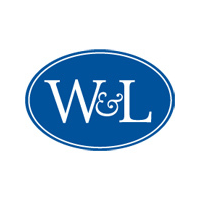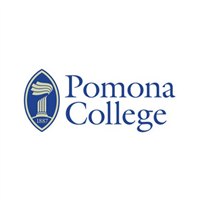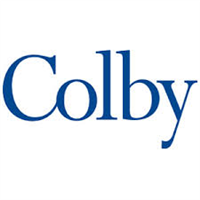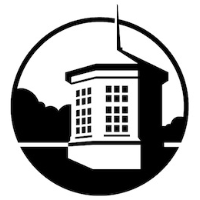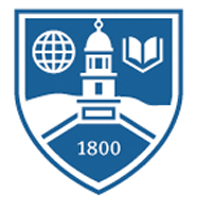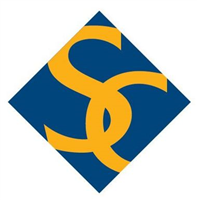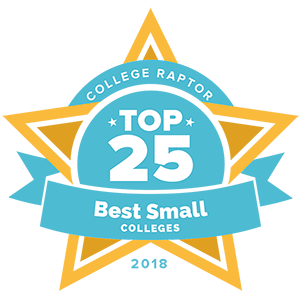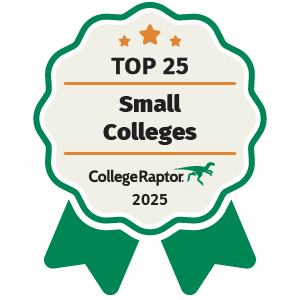 Love the idea of a small class size and campus? Then a small college may be right for you! Attending one of these top best small colleges affords its students the opportunity to join a tight-knit community and a unique opportunity for your voice to be heard.
Love the idea of a small class size and campus? Then a small college may be right for you! Attending one of these top best small colleges affords its students the opportunity to join a tight-knit community and a unique opportunity for your voice to be heard.
For this ranking list, we counted any college with fewer than 3,000 total students enrolled – so, this includes undergraduates and graduate students.
Top 25 Best Small Colleges
Also known as Caltech, the California Institute of Technology’s motto is, “the truth shall make you free.” Computer Science and Mechanical Engineering are top majors among students, and there have been over 75 Nobel laureates associated with Caltech (including 40 alumni and faculty members). The school is classified as “Doctoral/Research Universities--Extensive.”
Location
Pasadena, CA
Institution Type
Private
Student Enrollment
2,401
Originally known as the Augusta Academy and established in 1749, it would later be named after George Washington and Robert E. Lee, the latter of which was the president of the school for five years. With blue and white colors, students and athletes go by the nickname The Generals. The university boasts a first year retention rate of 98% and a student to faculty ratio of 7 to 1.
Location
Lexington, VA
Institution Type
Private
Student Enrollment
2,243
Although it was originally founded as a men’s college in 1793, the school is now composed of 48% men and 52% women. It was created out of the funds of Ephraim Williams, who died in the French and Indian War. The college receives about 11,000 applications each year and accepts 10% of students.
Location
Williamstown, MA
Institution Type
Private
Student Enrollment
2,222
Bowdoin College is a very selective school with an acceptance rate of 8%. 82% of students will graduate within four years, and 96% within six. The college also has first year retention rate of 96%. Bowdoin College offers 34 different majors and participates in joint Engineering programs with Columbia, Dartmouth, Caltech, and the University of Maine.
Location
Brunswick, ME
Institution Type
Private
Student Enrollment
1,915
Swarthmore College was one of the first coeducational colleges in the country. It is associated with the University of Pennsylvania through the Quaker Consortium, which means students can take classes at the four schools within the arrangement. 53% of students receive institutional grant aid to attend, $59,421 on average.
Location
Swarthmore, PA
Institution Type
Private
Student Enrollment
1,625
Pomona College receives around 11,600 applications annually and accepts 7% of them. The four commonly chosen majors are Econometrics and Quantitative Economics, Computer Science, Mathematics, and Political Science and Government. The school was created when the founders wanted to recreate a “college of the New England type.” Their mascot is Cecil the Sagehen.
Location
Claremont, CA
Institution Type
Private
Student Enrollment
1,764
Claremont McKenna College, which has a 13.3% acceptance rate and 81% four-year graduation rate today, was founded as a men’s college in 1946. It became co-educational in 1976. The most commonly chosen major is Econometrics and Quantitative Economics. With an 8:1 student-to-faculty ratio, 98% of students will stay after their freshman year.
Location
Claremont, CA
Institution Type
Private
Student Enrollment
1,422
Wellesley College is a private women’s liberal arts college going back to 1870. It is the largest of all-women colleges and has seen famous alumni including Hillary Clinton, Madeleine Albright, and Katharine Lee Bates. Econometrics and Quantitative Economics is the most commonly chosen major, but other popular choices include Computer and Information Sciences, Neuroscience, and Political Science and Government.
Location
Wellesley, MA
Institution Type
Private
Student Enrollment
2,447
Franklin W. Olin College of Engineering was established fairly recently in 1997. Half of a student’s tuition is actually covered by the Olin Scholarship. The three majors offered are Engineering, General, Electrical and Electronics Engineering, and Mechanical Engineering. With a first year retention rate of 99%, the college also has a low 8 to 1 student-to-faculty ratio.
Location
Needham, MA
Institution Type
Private
Student Enrollment
386
Harvey Mudd College offers programs only related to Science and Engineering. It has a low 13% acceptance rate, 97% first year retention rate, and 8 to 1 student-to-faculty ratio. Part of the Claremont Colleges, their colors are black and gold. The men’s teams are known as the Stags and the women are known as the Athenas.
Location
Claremont, CA
Institution Type
Private
Student Enrollment
922
With an acceptance rate of 10%, Amherst College is a extremely selective school. A majority of their first-year students come from New York. The third oldest institution of higher education in the state, it was originally a men’s college. It became coeducational in 1975. Amherst College’s motto is “terras Irradient,” which means “let them enlighten the lands.”
Location
Amherst, MA
Institution Type
Private
Student Enrollment
1,898
Davidson College was founded in 1837 and already started trying to reduce the cost of college for students by the 1850’s. Today, the school meets the financial needs of students through grants, student employment, and other aid. In fact, 65% of students receive institutional grant aid. 15% of applicants are accepted to Davidson and 94% decide to stay on after the first year.
Location
Davidson, NC
Institution Type
Private
Student Enrollment
1,927
Hillsdale’s motto is “Virtus Tentamine Gaudet” or “Strength Rejoices in the Challenge.” The school has a high 96% first year retention rate and a low 8 to 1 student-to-faculty ratio. All students who attend are required to take courses on the “Great Books,” the United States Constitution, and Science courses. 72% of students will graduate within 4 years.
Location
Hillsdale, MI
Institution Type
Private
Student Enrollment
1,678
Soka University of America has an acceptance rate of 70%. A fairly new school (founded in 2001), the private university focuses on pacifism, human rights, and the creative coexistence of nature and humanity. It was created by the founder of the Soka Gakkai International Buddhist movement, Daisaku Ikeda.
Location
Aliso Viejo, CA
Institution Type
Private
Student Enrollment
455
With 57 areas of study, the most popular major for Hamilton students is Economics, but Biology/Biological Sciences, Political Science and Government, and Research and Experimental Psychology are also popular choices. Their motto is in Ancient Greek: Γνῶθι Σεαυτόν, which translates to “know thyself.” The school has been coeducational since 1978 after merging with its sister school, Kirkland College.
Location
Clinton, NY
Institution Type
Private
Student Enrollment
2,072
A smaller school, Colby College is very selective with only a 7% acceptance rate, boasts a strong student-to-faculty ratio of 10 to 1 and 93% first year retention rate. 82% of students will go on to graduate within 4 years, and 90% within six. Econometrics and Quantitative Economics and Political Science and Government are the two most popular majors.
Location
Waterville, ME
Institution Type
Private
Student Enrollment
2,299
Also known simply as JTS, the seminary accepts 45% of students who apply. Its main building is located along the Hudson River. There are more graduate students at JTS than undergraduates. Though many alumni have gone onto careers in theology, many have also had notable careers in music, academia, and politics.
Location
New York, NY
Institution Type
Private
Student Enrollment
318
Haverford College is a liberal arts school founded in 1833 by the Religious Society of Friends, also known as Quakers. It’s part of the Tri-College Consortium which means students can attend classes at nearby schools Bryn Mawr and Swarthmore. “Non doctior, sed meliore doctrina imbutus,” or "not more learned, but steeped in a higher learning," is the school’s motto.
Location
Haveford, PA
Institution Type
Private
Student Enrollment
1,421
Part of the Midwest Conference, the most popular sports at Carleton College include Track and Field and Cross Country, Football, and Swimming and Diving. They’re known as the Knights and wear blue and maize for school colors. Biology/Biological Sciences is the top major, but International Relations and Affairs, Computer Science, and Research and Experimental Psychology are also popular choices.
Location
Northfield, MN
Institution Type
Private
Student Enrollment
2,059
Vassar offers 50 majors with the most popular being Research and Experimental Psychology, Economics, and Political Science and Government. The school has an acceptance rate of 18%. A few notable Vassar graduates or attendees include Anne Hathaway, Jane Fonda, Jacqueline Kennedy Onassis, and Anthony Bourdain.
Location
Poughkeepsie, NY
Institution Type
Private
Student Enrollment
2,459
The first operating college or university in Vermont, Middlebury College was founded in 1800. It was also the first American institution of higher education that gave a bachelor’s degree to an African-American in 1823. Although it was originally all-male, the school would begin to admit women in 1883. It has an acceptance rate of 10%.
Location
Middlebury, CT
Institution Type
Private
Student Enrollment
2,843
Bates College was founded in 1855 and was the first coeducational college in New England. It also began admitting minority students before the Emancipation Proclamation. Bates College only accepts 13% of applicants. The school has a 93% first year retention rate, 85% four year graduation rate, and a 10 to 1 student-to-faculty ratio.
Location
Lewiston, ME
Institution Type
Private
Student Enrollment
1,790
Located west of the Connecticut River, Smith College is among the largest women’s colleges in the US committed to the education and empowerment of women. Undergraduates can apply to the college for $0. Students enjoy a cozy 8 to 1 student-to-faculty ratio and 91% first year retention rate. Notable alumni include Julia Child, Gloria Steinman, and Sylvia Plath.
Location
Northampton, MA
Institution Type
Private
Student Enrollment
2,873
The two most popular majors at Grinnell College are Biochemistry and Computer Science. Part of the Midwest Conference and NCAA Division III, the Pioneers, wearing scarlet and black, have a wide variety of sports to choose from including Football, Swimming and Diving (combined), and Basketball. They currently have 423 athletes and their unofficial mascot is a squirrel.
Location
Grinnell, IA
Institution Type
Private
Student Enrollment
1,759
“Scientiæ Cedit Mare,” or “the sea yields to knowledge,” is the motto of the United States Coast Guard Academy. It was founded in 1876 and is the smallest of the five academies for service in the United States. The most popular major is Political Science and Government, General, but Oceanography, Business Administration and Management, and Mechanical Engineering are also top choices.
Location
New London, CT
Institution Type
Public
Student Enrollment
1,037
Is a Small College Right for You?
Small colleges bring a wealth of benefits to their students. Liberal arts colleges and research schools can all be considered “small,” so don’t consider yourself limited on options. Just like larger colleges, small schools can have competitive college application processes and admissions. Both have innovative teaching techniques, student research opportunities, and plenty of challenging academics and rigor.
Benefits of Small Colleges
- It can be easier to stand out in the classroom and with your student cohort.
- Smaller colleges are generally tight-knit communities.
- Smaller class sizes (lower student-to-faculty ratios). The California Institute of Technology, for example, currently has a 3 to 1 student-to-faculty ratio.
- It tends to be easier to get around and to classes and libraries on a smaller campus.
- It can be easier to get into the courses you need.
Potential Drawbacks of a Small College
- Small schools tend to have fewer clubs, extracurriculars, and events.
- They may have fewer dorm rooms available to students.
- Small schools may have fewer courses and major options for its students.
It’s important to weigh the pros and cons of large vs small to help determine the right size college for you.
Interested in the “small school” life? Check out College Raptor’s free match tool to see if any of these top best small colleges are a fit for you!
Methodology
Colleges are ranked based on a combination of factors, including graduation rates, campus diversity, endowment per student, and other data as reported via the National Center for Education Statistics (NCES) for the most recently available enrollment year. Some colleges may have been excluded from rankings based on certain criteria, including specialization and classification. Learn about our full methodology.
College Raptor is uniquely qualified to estimate college affordability as we are a leading provider of net price calculators to colleges across the U.S. Check out College Raptor’s free match tool to see if your favorite college is affordable for you.
 Love the idea of a small class size and campus? Then a small college may be right for you! Attending one of these top best small colleges affords its students the opportunity to join a tight-knit community and a unique opportunity for your voice to be heard.
Love the idea of a small class size and campus? Then a small college may be right for you! Attending one of these top best small colleges affords its students the opportunity to join a tight-knit community and a unique opportunity for your voice to be heard.
